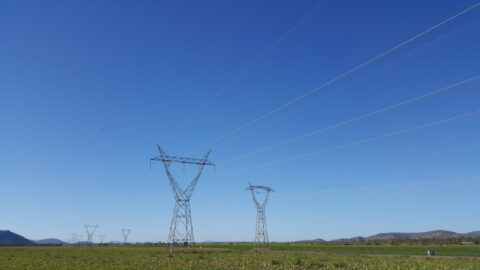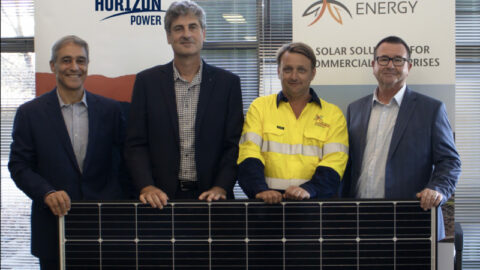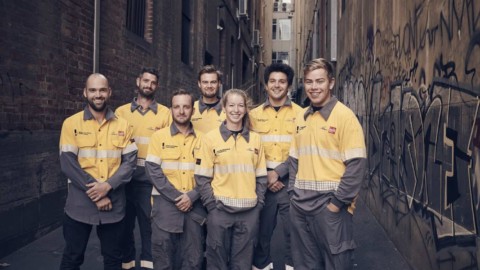by Matt Power, General Manager, Renewable Energy Target Branch, Clean Energy Regulator
As demand for rooftop solar continues to grow in Australia, the small-scale solar industry has new regulations designed to improve integrity for a more accountable solar market.
The Clean Energy Regulator (CER) has spent 2022 implementing the Small-Scale Renewable Energy Scheme (SRES) reforms. The reforms address recommendations made in the 2021 Integrity Review of the Rooftop Solar photovoltaic (PV) sector (the review).
Thirteen recommendations from the review, to improve the integrity of the SRES, were presented to the Australian Government. Twelve of the recommendations were accepted, with one noted by the Australian Government.
The recommendations became law on 17 December 2021 through the Renewable Energy (Electricity) Amendment (Small-scale Renewable Energy Scheme and Other Measures) Regulations 2021.
Clean Energy Regulator General Manager for the Renewable Energy Target branch, Matt Power, said the review was called to address consumer concerns about the solar industry.
“At the time, there was a lot of talk about how the industry wasn’t performing to consumer expectations,” Mr Power said.
“There were concerns about faulty installations and installers that were not on-site, but signing off on jobs.”
Throughout 2022, the CER has been implementing regulations which address these concerns. From 1 April 2022 new legal requirements apply to all solar PV installers, designers, retailers, agents, manufacturers and importers as part of Phase 1 of the SRES reforms.
Solar retailers are now required to provide written statements for any solar PV unit they acquire, install, or sell that will be used to claim small scale technology certificates (STCs). This statement requires retailers to provide information on feed-in tariffs, grid connection and expected performance of the system, which will improve consumer outcomes.
STCs provide a Commonwealth financial incentive that applies when an Australian consumer installs an eligible solar PV system. STCs cover approximately one third of a system’s upfront cost. Accredited installers and designers are also now required to make new and updated written statements, including installers evidencing that they have been on-site for the installation.
Further, agents are required to collect and retain the updated installer written statement and the new written statements from designers and retailers. Agents are also required to collect inverter serial number data, complementing the introduction of the CER’s inverter serial number ledger, where Australian manufacturers and importers are required to supply serial numbers for all approved inverters that enter the Australian market.
Mr Power has overseen the implementation of Phase 1 of the SRES reforms and says industry has been supportive of the reforms.
“Solar industry participants have seen it as a way to improve integrity in the solar sector, and that’s not just for STC claims, but for improved installation of approved solar products and consumers getting what they’ve paid for,” Mr Power said.
“We’ve put a significant amount of investment into educating the sector that installers are required to be on-site and to collect and retain that evidence. “I’ve also been working with our compliance branch that has new compliance powers. We can now remove participants from the SRES.
“If we find installers that are not on-site, and not meeting on-site requirements, we now have the ability under the Renewable Energy (Electricity) Regulations 2001 (REE Regulations) to remove these players if they’ve signed false and misleading written statements to the CER.
“The good news though, is that to date the sector has been very compliant and we are seeing good signs through our own in-depth assessment of these areas that installers have been on-site.
“We have been taking action against some installers and failing STC applications where the agent and the installer have not been able to provide the required on-site evidence for the start, middle and finish of the job.
“We will fail STC applications that do not meet the eligibility criteria for that on-site attendance, and if we do find retailers misleading consumers, we will take swift action against them.”
As part of the Phase 2 implementation of the SRES reforms, the CER is implementing changes to the installer and designer accreditation scheme and product listing. Between 7 November and 6 December 2022, the CER consulted with industry and other stakeholders on whether the CER should nominate a body to publish a list of SRES eligible solar panels and inverters. The CER will decide, based on the outcome of the public consultation, whether to open a nomination process for a body to publish approved solar panels and inverters.
On 16 December 2022, the CER invited organisations to apply to become an approved designer and installer accreditation scheme operator under the SRES. Applications close 15 March 2023. Mr Power said the application round is an opportunity for bodies with the right capability to operate an accreditation scheme and play an important role in the integrity of the SRES.
“This is the next important step we are required to perform under the REE Regulations to strengthen scheme integrity,” Mr Power said.
The Clean Energy Council (CEC) will continue to publish the approved solar panel and inverter lists, and to accredit installers and designers while these processes are undertaken. Mr Power said the CER continues to work with the solar industry.
“There are 19 gigawatts of rooftop solar installed in Australia that generated approximately 24,500 gigawatt hours of renewable electricity,” Mr Power said.
“A record-high 3.2 gigawatts of rooftop solar was installed in 2021, this was partly linked to the increase in home improvement expenditure during the pandemic. We expect 2.7 gigawatts of installed capacity in 2022 and a further 2.9 gigawatts installed capacity in 2023.
“With electricity prices rising as they have been in the past six months, this will lead to solar PV installations being an excellent investment opportunity for consumers and businesses to manage their own electricity bills into the future.”
More information is available at the following links: Phase 1 changes to the Small-scale Renewable Energy Scheme, Phase 2 changes to the Small-scale Renewable Energy Scheme and Installation requirements for designers and installers of small-scale systems.


















